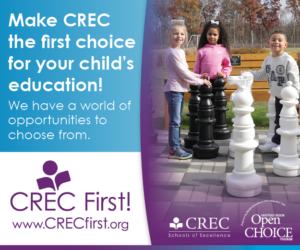Whether it’s a decision someone makes alone or with an adult child overseeing decisions for a parent, the question of how and where one is going to age and live out the latter years of their life is inevitable. Decades ago, the main choices for older adults were either living with their adult children or other family members, or reluctantly going into a nursing home. But it’s safe to say that the landscape for senior living has changed dramatically, especially in the past 10 years or so. Today’s seniors have many more options and choices, and a great deal more choice in what those choices are. That’s particularly good for the LGBTQ+ community.
A recent study* conducted by the American Advisors Group found that 82 percent of seniors want to remain in their homes for the duration of their lives. Besides the emotional attachment people have to the place where they’ve spent most of their adult lives, there are also additional reasons why the senior LGBTQ+ community, in particular, is opting to age in place at home for as long as possible. One main factor is that some are concerned about being accepted in a senior living community.
As a result, a familiar home feels safe and comfortable. In-home care becomes an attractive option for many as they age and their need for help increases.
Finding the Right In-Home Caregiver
Justin Michaud is the director of M.R. Home Care Inc., an elder care company that has been providing quality care in Connecticut for more than 30 years. M.R. Home Care’s staff is specially trained in providing an inclusive service for the LGBTQ+ community.
Michaud explains how many people don’t realize that the aging LGBTQ+ population needs help, especially when there is someone whose partner has passed on. He says, “Everybody wants to stay in their home, and nobody wants to go into assisted living since it would be a challenge. We are finding people that may have been fully out in their life, and they go back into the closet as they age. They’ve lost their spouse or partner, and they are all alone and are scared. They don’t know if they are going to be judged, and they’re scared to say who they are and be who they are.”
He adds, “Our motto is to keep you in your home as long as possible, in a safe, clean, non-judgmental environment, where you can keep your routine.”
M.R. Home Care trains their staff through Connecticut’s “Getting It Right” program. Getting It Right works with both home care and facility-based aging care providers “to create welcoming and intentionally inclusive services for LGBTQ+ clients and families.”
Michaud notes that the staff at M.R. Home Care are trained to create an inclusive environment right from the very contact a client has with the agency, saying, “We trained all of our clerical staff on the rules and regulations of the program, and on what to ask and what not to ask in order to find the appropriate caregiver for that person.”
In turn, Michaud makes sure that all prospective staff members understand that they could potentially be caring for members of the LGBTQ+ community. He explains, “When I interview caregivers, I am upfront with them and ask, ‘How do you feel about gay people? Would you have a problem going into the home of a gay or transgender person and taking care of them?’ You have to prepare people for that.”
He also adds that the intake papers the agency uses were redone to be more comprehensive, saying, “We are asking additional questions to make everybody comfortable. Caregiving is an inclusive system, and you have to find the right person. We take pride in finding the right caregiver for the community as a whole.”
Seabury at Home is a program that provides a full range of services for those who choose to stay home. Christine duPont, vice president of marketing and communications for the company, notes that their services are now state-wide, begun as an offshoot of the Seabury residential facility in Bloomfield. Seabury is dedicated to diversity and servicing all people with respect and sensitivity. Every client has a personal health coordinator who oversees all aspects of care and becomes the main point of contact for the client and/or adult children or others involved with the client. They can provide everything from companion care to deliveries and transportation, live-in care, and more. (See more about Seabury’s program below.)
Senior Living Communities Are Evolving
Many within the LGBTQ+ community chooses to remain in their own homes and receive care in a familiar environment, but there are others who do embrace the idea of moving to a residential community, whether for the convenience of no longer having to manage the upkeep of a house, or because they’re feeling isolated and are looking for more social interaction.
Today’s communities are a far cry from the images the term “nursing home” conjures up, as they are just that—communities. They’re modern, diverse, and strive to create an environment that’s accepting, inclusive, and caring to all residents. They also offer different levels of care that progress as needed.
Seabury, mentioned above, is affiliated with the Episcopal diocese of Connecticut, and reflects the welcome and inclusion of the church. duPont says, “openness and inclusion are part of our fabric and culture. The residential community provides all levels of service from independent living to memory care and more as needed. There is also a vibrant community around the arts, culture, activism, and other interest areas.
What makes Seabury different, however, is how they structure the financial plans. duPont notes that as part of the intake process, Seabury does a complete financial and care review, essentially a complete underwriting process. Then, the client pays a membership fee and an ongoing monthly service fee, which duPont notes provides predictability and ensures that the client will always get an appropriate level of care at all stages of life. Moreover, this structure makes it easier to allocate—and preserve—assets either for other uses or to leave as a legacy.
McLean in Simsbury is another life plan community that offers assisted living, memory care, independent living, as well as short-term skilled nursing rehab for post-acute rehab services, long-term skilled nursing, and a home care agency and hospice. McLean also strives to create a community of inclusion for all. Carlene Rhea, the director of assisted living and resident services at McLean, says, “We really believe everybody’s story is unique. Everybody coming through our door has a concern of one kind or another. And we have a resident-centered philosophy of care, and we provide residents and family and staff with person-centered care. We are mindful of a person’s body, mind and spirit.” McLean’s Home Care and Hospice program is also certified through the Getting It Right program, and Rhea notes, “They certainly are a resource to us at any time as we all try to practice an inclusive lifestyle and an inclusive commitment to care.”
Today, moving to a senior living community is not largely seen as an end-of-life transition. In fact, it can offer people a new, exciting chapter for their lives. Greene notes, “What makes senior living different today than 30 years ago is recognizing that people want to learn and grow all throughout their lives, and this is a community. Moving to a retirement community is not a place to go away. It’s a place to go and grow, and ‘starting’ happens at all stages of life. It’s what keeps us vibrant and young.”
Being Prepared Ahead of Time Is Key
Choosing how and where you want to age or making that decision on behalf of a loved one can be extremely overwhelming, as most people aren’t quite sure where to begin when it comes to researching different options. The good news is that you don’t have to go it alone, and there are people out there who are ready and willing to help to ensure that you select the right choice.
Liz Cornish is the owner of New Season in Life, which offers guidance about independent living, assisted living, memory care, in-home care, and senior support services. After spending more than 30 years as a physical therapist, Cornish decided to start New Season in Life as a means of helping people navigate the overwhelming landscape of senior living options. If you aren’t sure where to start when it comes to research, turning to someone like Cornish can be such a welcome relief.
She explains, “I have a network of people that want to age in place and stay at home. I have skilled resources and non-skilled resources, elder care attorneys, and of all different types of other companies to refer people to so that we can provide them with exactly what they need.”
Cornish also notes that the conversation of how someone wants to age should happen long before they’re in a position where they need to make a decision, saying, “I try to tell people, ideally, to start to have the conversation before you’re even thinking of [making a move]. Say, ‘Hey, Mom, I know we’re not ready now. But just looking ahead, how do you want to age, and what are your thought processes as you age?’”
She notes that it’s important to reassure an aging parent that they aren’t making a move right away, but if they start to forget medications, there are changes in hygiene, or bills aren’t being paid, there needs to be a plan in place for what those next steps might be.
duPont from Seabury agrees, saying that “this is a complex decision that takes a lot of planning. We stress the ‘education piece’ of the process so that people really know what their options are.” She invites people to take a tour, and she says that adult children are often very impressed. “We’re now seeing the second generation of residents,” she says. “Seabury has been open since 1992, and these are the people who had their parents here in the 90s.” duPont also stresses that attitude is critically important, she says that those people who are happiest are those that engage in a community, who look at moving to a residential community as a new chapter or adventure.
As you research communities, it’s important to pay attention to all the needs and desires of the individual who will be living there. Cornish is proud to note that “All the communities I work with are open and accepting and welcoming of all people.”
She adds that these are also diverse communities, and for LGBTQ+ people it’s essential that they express what they would like to see as part of their experience, no matter what that is. Cornish encourages people to speak up and notes that the communities are very accommodating, “after all, they want the community to be the resident’s home.” For those for whom starting those conversations may be difficult, Cornish says that she can help facilitate the process.
Senior Living Is Not One Size Fits All
Making the choice of how and where to age is a personal decision and it looks different for everyone. Perhaps the best way people can help their loved ones prepare for the future is to start the conversations early and to keep them going as time progresses and the need for care approaches. Rhea explains, “It’s good to remember that a discussion is a process and not an event.”
Whether it’s remaining at home and relying on home care services or entering a senior living community and starting a new chapter, everyone deserves to live out the latter years of their lives in an environment that feels comfortable, safe, secure, and like… home.
For more information on M.R. Home Care, visit ctmrhomecare.com. Information about Seabury and McLean can be found at seaburylife.org and mcleancare.org. To learn more about Liz Cornish, visit newseasoninlife.com.
*Source for study referenced – https://www.aag.com/homesurvey/p/1/








More Stories
Connecticut Sun: Playing for Good
Call Him Mister Connecticut: Jean Carlo Salazar’s Journey as Nurse, Model and Pageant Contestant
Ensuring a Seat at the Table